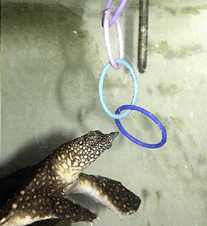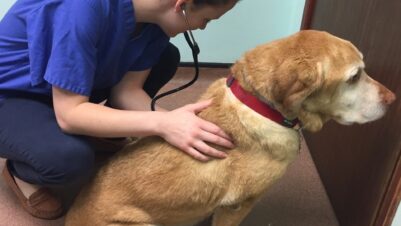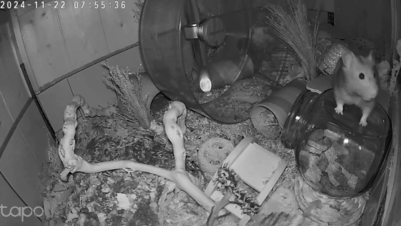Many clients and pet professionals are familiar with the concept of a dog showing non-reproductive sexual behaviour towards inanimate objects or family members in the home, but many owners are often surprised when they see a similar behaviour in cats. This article looks at the causes of humping behaviour in cats.
Impact of humping behaviour
While “humping” is not the classiest of terms, it is vernacular that most clients will be familiar with and will most likely use if ever needing to describe this particular behaviour problem; however, it may also be referred to as “mounting” in what limited literature exists on non-reproductive sexual behaviour displayed by cats.
The humping behaviour occurs when the cat gathers an inanimate, often soft object with their front paws, adopts a slightly arched position and thrusts their hips forwards and backwards (Houpt, 1997). Similarly, the cat can try to lock their front legs around the foot, leg or arm of a family member and display a similar behaviour.
The physical impact on humans in the home is usually limited to it being more of a nuisance or an embarrassment than a behaviour that carries inherent risk (Houpt, 1997). However, if the behaviour is being displayed towards people it can potentially lead to accidental harm, as the cat grabs hold with their forelegs and may occasionally bite.
The impact on the cat is unclear. This behaviour in a neutered cat should be considered abnormal, and as with any abnormal behaviour, the cause should be investigated as it is likely a symptom of an underlying issue. While usually attributed more often to male cats, female cats can also show mounting and humping behaviour.
Medical causes of humping in cats
If a male cat has been neutered more than eight weeks prior and their penis is still showing penile spines then it is indicative that there are still higher-than-normal levels of testosterone present in the cat
Needless to say, unneutered cats will be more likely to show sexual behaviour. If an unneutered cat is displaying humping behaviour it would be hard to identify that as abnormal, thus typically the assumption would be that it is hormone related.
In some instances, the cat may appear to be neutered according to its history, but there can be complications. With female cats, ovarian remnants can be found post-neutering. With male cats, there can be instances of cryptorchidism, where a testicle remains hidden; even rarer, this author was involved in a case where a cat had had two testicles removed, but a third hidden testicle was found. If a male cat has been neutered more than eight weeks prior and their penis is still showing penile spines then it is indicative that there are still higher-than-normal levels of testosterone present in the cat.
There are considerations that cats with lower urinary tract disease (FLUTD) may show humping behaviour. While less common than other behavioural indicators of FLUTD, such as changes in toileting routine, overgrooming the lower abdomen and inner thighs, and an increase in vocalisation, a cat displaying humping should be evaluated to rule out any urinary tract issues. This is particularly the case if this is a new behaviour without any other significant medical or environmental changes.
Finally, while not proven, there is anecdotal evidence that suggests cats with skin or allergy issues may also display humping behaviour.
Behavioural causes of humping in cats
If all medical issues have been ruled out then it is likely that a cat showing humping behaviour has high arousal levels and is not being suitably stimulated. Typically, this will come from a change in environment or owner circumstances: for example, when a cat is moved to a new home and/or no longer has outdoor access, or there is a change in the owner’s work pattern where they have less time to spend with the cat.
While purring and kneading are typically associated with a cat being happy (cats can purr when in pain), excessively prolonged purring and kneading can be indicative of a cat becoming overstimulated
Humping behaviour can also accompany other indicators of high arousal levels such as excessive purring, kneading or drippling. While purring and kneading are typically associated with a cat being happy (cats can purr when in pain), excessively prolonged purring and kneading can be indicative of a cat becoming overstimulated. Some owners might describe their cat as going into a “trance-like state” when excessively kneading. Humping behaviour can often follow on from sustained kneading behaviour; however, it can also happen in relative isolation.
Further, it is not uncommon to have owners reporting cats excessively purring or kneading and then showing aggressive-type behaviour such as biting, grabbing with forepaws or displaying raking behaviour with their back paws.
Less commonly, there are suggestions that cats that are stressed due to feelings of fear or anxiety can also show humping behaviour. This is likely due to the fact that feelings of fear, anxiety or frustration can lead to stress and have a similar physiological impact on cats (Casey and Trevorrow, 2018). The humping is not likely to be an acute stress response; rather, if a cat is encountering stressors in the home environment such as the stress of an unbonded conspecific living in the property, this may contribute to humping behaviour at another time of day, and not directed at the stressor. The cumulative stress ultimately can impact normal function and result in abnormal sexual behaviour (Notari, 2010).
Management of humping behaviour in cats
If you have worked with your client to address and/or rule out any underlying medical issues that may be causing the unwanted behaviour, then it would be prudent to signpost them to a suitably qualified behaviourist who can assess the cat’s behaviour and the home environment to identify the likely cause of the humping behaviour.
If the cause is due to the cat having high arousal levels and lacking stimulation, then the cat will likely benefit from increased enrichment, such as splitting feeding time into smaller, more frequent feeds to better match their ethology and keep the body in homeostasis. Meals should also be provided in an interactive format so the cat has to expend both mental and physical energy accessing food. Once the cat has solved an easier puzzle or enrichment feeder, owners should try their cat with more complex feeders and rotate them so the cat doesn’t get bored. If the cat does not eat their meal allowance well, then the use of puzzle feeders with treats may be beneficial, but owners will need to be cautioned on the appropriate use of treats to ensure the cat does not gain unwanted weight.
Furthermore, at least three human-directed play sessions should be carried out every day with each lasting three to five minutes. Short, frequent sessions are typically better for cats than one longer session where they may disengage. Toys should also be provided for self-directed play.
Access to vertical space should not only be considered for cats that are fearful; cats are naturally inclined to want to get up high and climb, so may benefit from the addition of cat trees, cat shelves and walkways.
Owners should work with a behaviourist to identify any underlying stressors and address those issues to ensure that stress is not feeding into the behaviour.
Final thoughts
Humping behaviour in neutered cats should never be dismissed as merely awkward or embarrassing. Rather, the behaviour serves as an important indicator warranting investigation into underlying medical conditions such as hormonal imbalances and FLUTD, as well as behavioural concerns related to overstimulation, inadequate enrichment or chronic stress. If an underlying medical condition has been ruled out, then addressing environmental and behavioural factors through appropriate enrichment strategies is key.
Key takeaway points
- Cats can display humping behaviour
- With neutered cats, this should be considered an abnormal behaviour
- Humping behaviour will indicate an underlying issue, whether medical or behavioural








